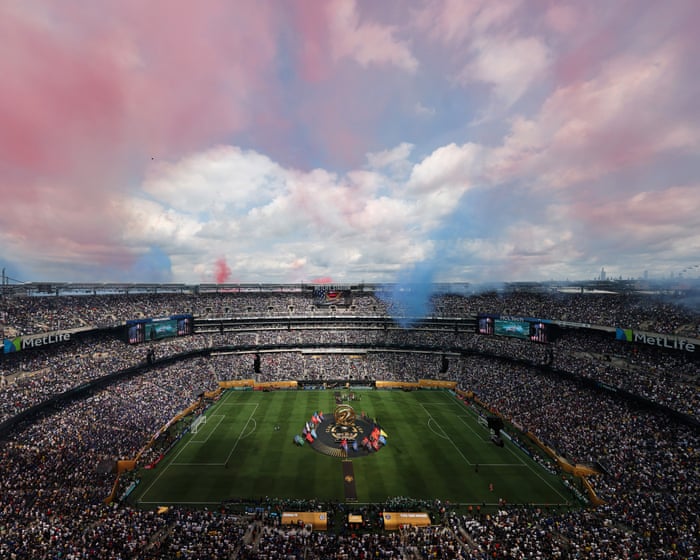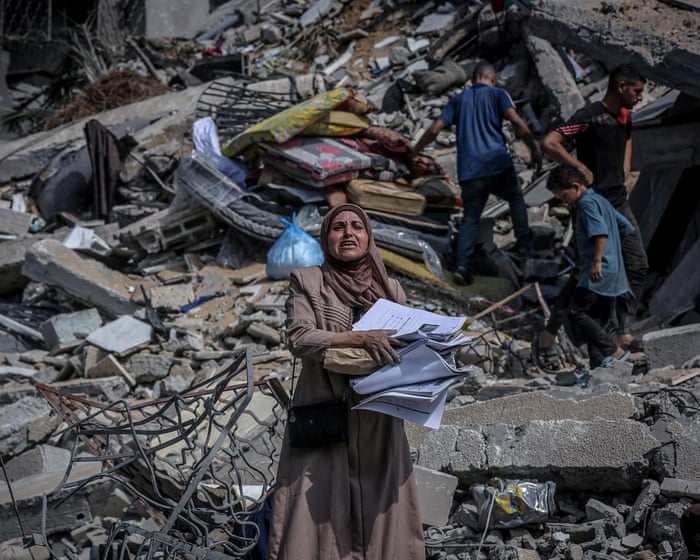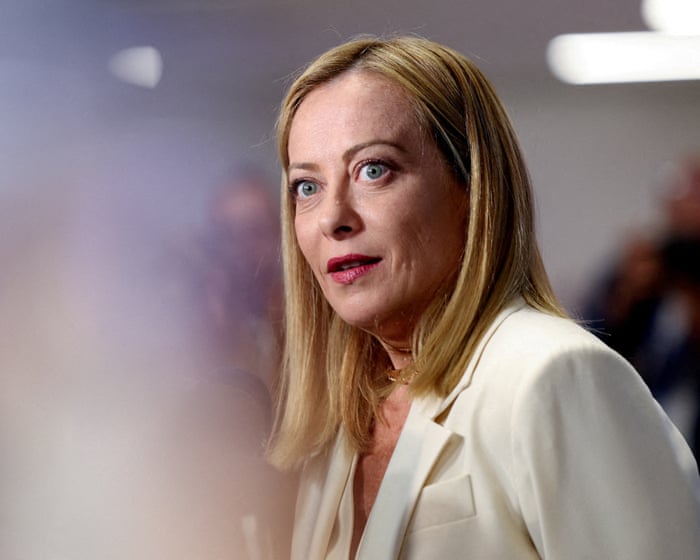When tickets for the 2026 World Cup went on sale last week, millions of fans logged in only to find out what Gianni Infantino truly meant by his promise that “the world will be welcome.” The cheapest ticket for next summer’s final, located high up in New Jersey’s 82,500-seat MetLife Stadium where players look like dots and the game is barely visible, costs $2,030—and that doesn’t include an oxygen tank. According to customers who finally saw the previously hidden prices, most upper-level seats range from $2,790 to $4,210. FIFA’s much-publicized $60 tickets for group-stage games, touted as proof of affordability, appear on digital seating charts as tiny green specks at the edges—more like mirages of inclusion than actual options.
FIFA kept prices secret until the moment of sale, replacing the usual price list with a digital lottery that decided who could even attempt to buy. Millions waited for hours in online queues, their positions determined by algorithms. By the time most gained access, the cheaper sections were already gone, likely snapped up by bots and bulk buyers—and that was before FIFA quietly raised prices for at least nine matches after just one day of sales. The process felt less like a ticket release and more like a psychological experiment to test how much frustration and scarcity the public would endure.
FIFA claims this is simply adapting to “market norms” in the United States, where most games will be held—as if overcharging fans is a cultural tradition, like banning beer at the Qatar World Cup. In a way, they’re right. Profiteering and exploitation have long been America’s guiding principles in the absence of a national religion. What’s unfolding isn’t so much a global soccer celebration as a fintech lab showcasing everything that makes modern entertainment exhausting. FIFA has combined all the annoyances of today’s consumer experience—dynamic pricing, algorithmic lotteries, endless logins, even remnants of a failed crypto boom—into one soul-crushing system designed to turn access itself into a product. This is the World Cup redesigned for the Ticketmaster-Live Nation era, where the joy of fandom meets the cold logic of hedge-fund speculation.
It all started during the 2022 NFT craze, when FIFA launched FIFA+ Collect, offering “affordable ownership” of digital soccer moments—like Pelé lifting the 1970 trophy, Maradona’s 1986 solo run, and Mbappé’s 2018 final goal—each sold as a blockchain collectible. When the market crashed (surprise, surprise), FIFA repurposed the tokens as ticketing opportunities. The new scheme, branded with the corporate-sounding “Right to Buy” (RTB), lets fans buy NFTs that may one day grant them the chance to purchase a real match ticket. A “Right to Final” token costs up to $999 and can only be redeemed if the buyer’s chosen team makes it to the final—otherwise, it becomes a worthless JPEG. FIFA found a way to profit from anticipation itself, trading not in tickets but in fear of missing out.
That illusion shattered this week when FIFA Collect administrators revealed that most Right to Buy holders would only qualify for Category 1 and 2 seats—the most expensive options in FIFA’s initial phase, far beyond what the average fan can afford. The news sparked outrage in the NFT community, with Discord threads flooded with complaints of being “ripped off” and a scramble to resell tokens as their value plummeted.
When the actual tickets became available, the price hikes were staggering. Category 1 seats for the semi-finals are nearly $3,000; quarter-finals close to $1,700. With FIFA’s new dynamic pricing model, these figures canTicket prices are set to rise significantly. Borrowing a technique from airlines and Silicon Valley ticketing platforms, FIFA now manages the world’s biggest sporting event with a complex, multi-tiered system that creates a hierarchy of privilege.
At previous World Cups, resale prices were limited to the original face value. For the 2026 tournament, FIFA removed that cap and entered the secondary market itself. On its official resale platform, tickets are already listed for tens of thousands of dollars—one final ticket originally priced at $2,030 was relisted the next day for $25,000. FIFA profits twice from each transaction, taking a 15% commission from both the seller and the buyer, earning $300 for every $1,000 traded. Officials claim this approach discourages scalpers from using external sites like StubHub, but in reality, it legitimizes them—as if the easiest way to beat ticket touts is to host them.
By the time a ticket is scanned at the turnstile on match day, it may have been bought and resold three or four times, with each transaction adding to FIFA’s revenue. This system functions less like a ticketing service and more like a financial instrument, making FIFA’s $3.017 billion target for ticket and hospitality revenue seem suddenly achievable.
Fan groups have reacted with predictable disbelief and anger. Thomas Concannon of England’s Fans’ Embassy called the prices “astonishing,” noting that following a team through the tournament with the cheapest tickets would cost more than double the equivalent experience in Qatar. When you factor in transatlantic travel, accommodation, and visa restrictions, the so-called “most inclusive World Cup ever” starts to look more like an exclusive gated community. Ronan Evain of Fans Europe described it as “the privatization of what was once a tournament open to all,” arguing that FIFA is creating “a World Cup for middle-class Westerners and the lucky few who can enter the U.S.”
In Mexico, where resale laws are more strictly enforced, FIFA gave in to government pressure and capped resale prices at face value on a local ticket exchange. Elsewhere, the unchecked free-market exploitation continues. The logic is simple: scarcity drives profit, and even disappointment can be monetized.
FIFA defends its approach by pointing to American precedents—concert promoters and major sports leagues have used dynamic pricing for years, and resale sites routinely charge similar fees. But citing “market norms” misses the point. Soccer’s global tradition isn’t meant to mimic the Super Bowl or the Eras Tour by normalizing the exploitative consumer practices Americans have long accepted. It was supposed to belong to everyone: traveling supporters, families, and the people who turn neutral stadiums into vibrant, noisy carnivals.
The 2026 rollout reveals a new frontier in sports capitalism: the monetization of emotion. FIFA has built an ecosystem where every feeling—excitement, anxiety, devotion—becomes a revenue stream. Fear of missing out? There’s a token for that. Last-minute panic? Dynamic pricing adjusts accordingly. Regret? The resale platform takes another 30%. Buying a ticket is no longer an act of fandom but of speculation—a bet on both your team’s success and your own disposable income.
The parallels with the live music industry are striking. With concerts, the rise of VIP packages and premium pricing has turned performances into exclusive spectacles and audiences into customers. The same transformation is happening in soccer. Stadiums once defined by chaos and community are being redesigned as climate-controlled, efficient venues—with perfect sightlines, perfect sound, and prices that erase the very imperfections that made the experience human. When ordinary fans are priced out, what remains is a sport stripped of its edge, flattened into mere entertainment.
FIFA says that every dollar geThe revenue from ticket sales is reinvested into the game, as FIFA emphasized in a recent letter to the Guardian, treating this well-worn argument as a moral justification. However, what’s really being returned to soccer is a revised perspective: that the sport, like every other aspect of modern life, can be quantified, divided, and turned into a commodity. In doing so, the world’s most democratic game becomes an exercise in exclusion, where the right to participate is dictated by artificial intelligence and financial calculations.
Infantino continues to claim that the 2026 World Cup will be “the biggest, best, and most inclusive ever.” He’s likely correct on the first point and may be on the second, but a tournament priced as a luxury item is bound to fail miserably at the third. The dream that football once represented—of unity and shared happiness—has been purchased, repackaged, and resold at a higher price. When access itself becomes a tradable asset, the world’s game no longer belongs to the world.
Frequently Asked Questions
Of course Here is a list of FAQs about the 2026 FIFA World Cup ticket strategy framed around the concept of exploiting Fear of Missing Out
General Beginner Questions
1 What does FOMO mean in the context of World Cup tickets
It stands for Fear Of Missing Out Its the anxiety that if you dont buy tickets immediately youll miss your chance completely and be left out of a historic event
2 How is FIFA creating a nightmarish ticketbuying scenario
By using complex multiphase sales processes limitedtime windows and lottery systems FIFA makes the process stressful and uncertain This pressure can cause fans to make rushed expensive decisions
3 What are the main phases of the 2026 World Cup ticket sale
Typically there are phases like a Random Selection Draw followed by FirstCome FirstServed sales and later sales for specific matches This stretches the process over many months
4 Why cant I just buy a ticket for the final easily
Demand is astronomically higher than supply FIFA uses these complex phases to manage the overwhelming number of requests and to maximize revenue by creating intense competition
Advanced Strategy Questions
5 What is a Random Selection Draw and how does it exploit FOMO
Its a lottery where you apply for tickets without knowing if youll get them You must commit your payment details upfront This precommits millions of fans making them feel they might get a ticket which fuels the fear of losing that chance
6 How do conditional payment and ticket limits increase pressure
You authorize FIFA to charge your card if youre selected in the lottery Combined with limits on how many tickets you can buy this creates a this is my one shot mentality pushing you to apply for more expensive packages or risk getting nothing
7 What are the risks of buying tickets in the first phase without knowing the match schedule
You might end up with tickets for teams you dont care about or for matches in a city you cant travel to The FOMO of missing out on any ticket overrides the logical choice of waiting for a more suitable match




